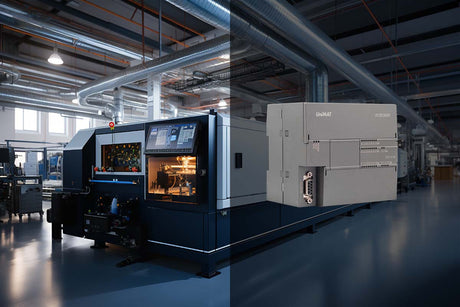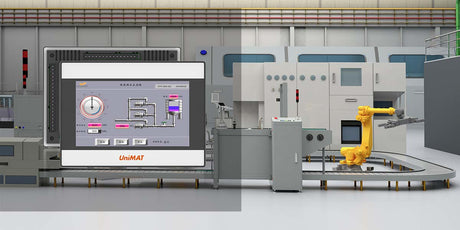
HMI is the abbreviation of Human Machine Interface,"human-machine interface",also called human-machine interface.Human-machine interface(also known as user interface or user interface)is the medium for interaction and information exchange between the system and the user.It realizes the conversion between the internal form of information and the form acceptable to humans.Human-machine interface exists in all fields involved in human-machine information exchange.
Composition and working principle of human-machine interface(HMI)products(How HMI Works):
Human-machine interface products are composed of hardware and software.The hardware part includes processor,display unit,input unit,communication interface,data storage unit,etc.The performance of the processor determines the performance of the HMI product and is the core unit of HMI.According to the different product levels of HMI,the processor can be selected as 8-bit,16-bit,and 32-bit processors respectively.HMI software is generally divided into two parts,namely the system software running in the HMI hardware and the screen configuration software running under the Windows operating system of the PC.Users must first use the HMI screen configuration software to create a"project file",and then download the compiled"project file"to the HMI processor through the serial communication port of the PC and the HMI product for operation.

1.The interface design is concise and clear:When using the device,users do not need to spend too much time and energy to understand the functions and operation methods of the interface.
2.The operation process is natural and smooth:After the task is completed,the feedback,error prompts,undo and redo functions meet the user's psychological expectations as much as possible,reducing the user's cognitive burden.
3.The interface responds quickly and stably:When the user uses the device,the device can respond to his or her operation quickly without problems such as freezes and delays.
4.Personalization and scalability:Different users have different usage habits and needs.HMI allows users to customize according to their preferences and needs.
5.Data visualization and intelligent prompts:By intuitively displaying complex data to users in the form of charts,images,etc.,it can help users better understand information and improve decision-making efficiency.
6.User feedback mechanism:By collecting user feedback,designers can promptly discover and solve problems in the interface and continuously optimize the interface design.
7.Cross-platform compatibility:HMI can run stably on different devices and platforms to maintain a good user experience.
The above is a brief summary of How HMI Works and Transforms User Experience.Unimat is a professional HMI manufacturer with 20 years of R&D and production experience.If you have any questions about HMI,please contact Unimat.









